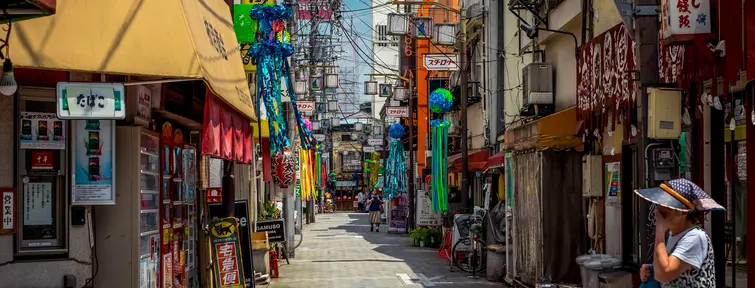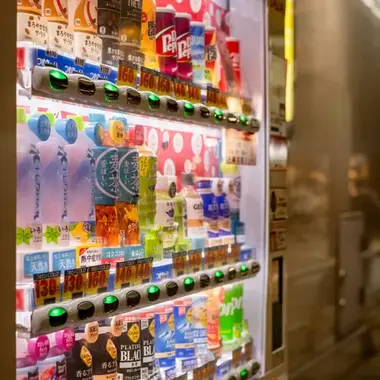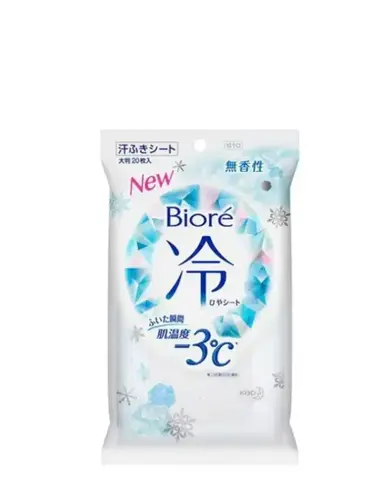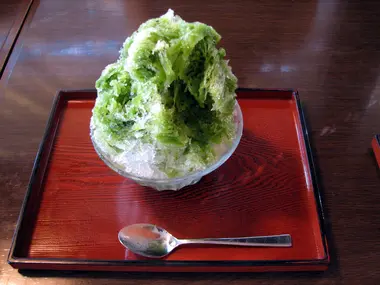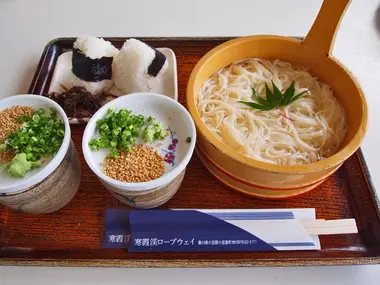5 tips for surviving summer in Japan
- Published on : 19/06/2023
- by : Ph.L
- Youtube
Summer in Japan can be a trying time, with temperatures sometimes approaching 40°C (104 °C ) in full sun and humidity high enough to damage even the most resistant makeup. For a first-timer, this climate can be particularly hard to bear. To prevent heatstroke and other issues, here are five tips to make your summer as pleasant as possible while exploring the archipelago!
How to survive summer in Japan
1/ Stay hydrated
- Drinks: Mineral water is your best friend for summer, but Japanese pharmacies also offer beverages specifically tailored for hot weather. These include drinks with the "FOSHU" (Food for Specified Health Uses) label, which promote health without being classified as medicines.
These beverages, like mineral-enriched water, are particularly effective for staying hydrated and combating intense heat. Our recommendation: try Pocari Sweat and Karada Shinto drinks, ideal for preventing summer fatigue and anemia.
- Accessories: Opt for reusable bottles and use public water fountains to stay hydrated without producing plastic waste. What's more, many reusable bottles are designed to maintain the temperature of their contents, keeping your drink cool all day long, an appreciable advantage under the intense Japanese summer sun.
2/ Refresh and stay cool
Cooling wipes: Use wipes (reikan shīto) to cool yourself down quickly, which often have menthol on them to refresh your skin and body! Fragrant and easy to carry around, cooling wipes are definitely a must-have for summer.
They can be used on a hike as well as at the office, and their cooling agents are a great help in regulating your temperature while you wait for that revitializing cold shower at the end of the evening.
Body sprays: Cooling body sprays are a popular option in Japan for beating the summer heat. These sprays, available in most pharmacies and supermarkets, often contain ingredients such as mint, eucalyptus, or cooling agents, which provide an immediate sensation of freshness on the skin.
You'll find specific sprays for different parts of the body, including versions for the face and feet. Some sprays also include moisturizing agents to prevent the skin from drying out.
- Ice packs: Reusable ice packs are another effective way to keep cool in summer. These are often available in pharmacies and sports stores and can be frozen before use to provide a portable source of freshness.
3/ Protect yourself from the sun
Sunscreen is essential to prevent sunburn and UV damage. In Japan, there is a wide range of high-quality products with different sun protection factors (SPF) and properties.
- Recommended SPF: Use a sunscreen with an SPF of 30 or higher, and make sure it offers broad-spectrum protection against UVB and UVA.
- How to apply: Apply sunscreen generously 15 to 30 minutes before going out, and reapply every two hours or after swimming or sweating.
- Popular products:
- Biore UV Aqua Rich Watery Essence: Lightweight and non-greasy, it's perfect for everyday use.
- Anessa Perfect UV Sunscreen: Highly protective, ideal for prolonged outdoor activities.
The parasol is also a traditional Japanese accessory. Historically made of oiled paper and known as wagasa, Japanese parasols, now mostly replaced by Western umbrellas, remain one of the best ways to protect yourself from the sun.
However, if this very "Japanese" look isn't to your taste, remember that sunscreen is still a very good option to avoid turning crayfish red.
Simultaneously well, since Japan is full of skincare products with sun protection factor included.
Our selection: from Nivea to BIORE, via Kosé or Anessa, many SPF 50 sunscreens are sold in drug stores across the country. The latter are even often supplemented with lip balms and BB creams, also enriched with anti-UV agents.
4/ Use a portable fan
Whether in restaurants, konbini or even on the train, it is customary to turn on the air conditioning when the hot weather returns. A habit that you quickly acquire a taste for and that would almost make you feel helpless once you find the outside.
Fortunately, pocket fans are here!
Straight from South Korea, handheld fans gradually won the hearts of the Japanese following the Korean Wave (the ''Korean wave,'' of which drama and K-pop idols are the figureheads) that swept over the archipelago a few years ago.
We now find them in the hands of the Japanese, and in particular young people who see them both as fashion items and as very practical little tools to face the scorching heat.
- Also Read: Okubo Korean town
5. Eat local to stay cool
Eating light and cold is perhaps the watchword of summer in Japan.
This is why one will easily find somen in this season, these fine wheat noodles that are eaten cold with a soy-based sauce. On the same principle, we will also appreciate the HiyashiChuka, a dish of Chinese origin made of cold noodles accompanied by vegetables.
As for dessert, let's not forget the stars of the summer table either: kakigori, traditional Japanese ice cream made from shaved ice!
While these few tips might be helpful, don't forget common sense either.
Also remember to wear a hat and sunglasses to protect yourself from bright sunlight, and avoid sunbathing between 12 pm and 3 pm. Don't forget the mosquito repellent either, whether in the countryside or in the city, because you never know!
Want even more tips? Feel free to check our website and subscribe to our newsletter. Good news: we’re on Instagram too!
